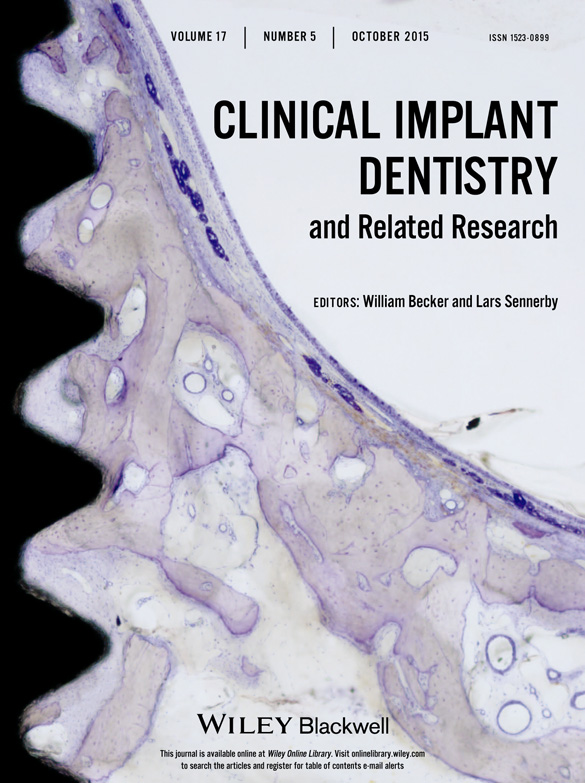Early Loading of Fluoridated Implants Placed in Fresh Extraction Sockets and Healed Bone: A 3- to 5-Year Clinical and Radiographic Follow-Up Study of 39 Consecutive Patients
Abstract
Background
Immediate placement of implants in extraction sockets for early loading is an attractive treatment modality due to reduced treatment time. However, the outcome of fluoridated implants in this situation with regard to bone levels and health of soft tissues is not well documented.
Purpose
To evaluate the outcome of early loading of OsseoSpeed™ dental implants placed into fresh extraction sockets and healed bone in consecutive patients treated in a private clinic.
Materials and Methods
A total of 182 OsseoSpeed™ implants (Astra Tech Implant System, DENTSPLY Implants, Mölndal, Sweden), 72 in immediate extraction sockets and 110 in healed sites, were placed in 39 consecutive patients. The implants were loaded with permanent restorations within 60 days (average 31 days). Clinical and radiographic follow-up examinations were performed annually for at least 3 years (mean 55 months). An aesthetic index was used to evaluate the soft tissues adjacent to the prosthetic restorations.
Results
No implant was lost during the observation period, giving a survival rate of 100%. Bone level changes during the observation period were minimal, with a mean marginal bone loss of 0.3 ± 0.9 mm around the delayed implants and a mean marginal bone gain of 0.3 ± 1.4 mm around the immediate implants (p = .0036). The frequency distribution of bone level revealed that 85% of implants placed in fresh extraction sockets and 84% of implants in healed bone did not show any loss of bone level during follow-up (p = NS). Soft tissue complications were observed at two immediate implant sites in one patient. The remaining 180 implants received the highest aesthetic score. Moreover, no signs of peri-implant purulent infection or aggressive bone loss were found during the follow-up period.
Conclusion
Early loading of fluoridated implants with permanent constructions appears to be a viable therapy for implants placed immediately in extraction sites and in healed bone.




